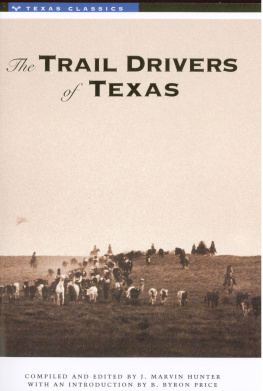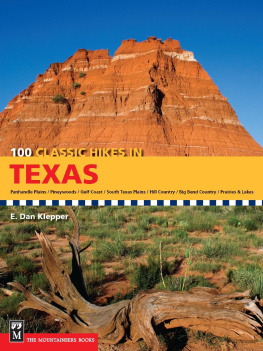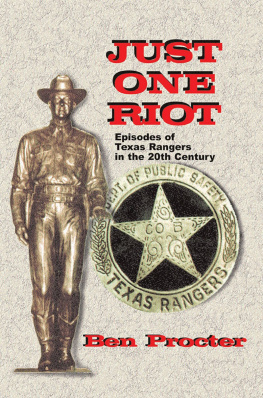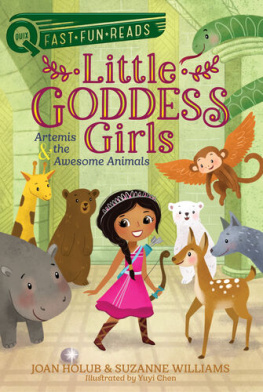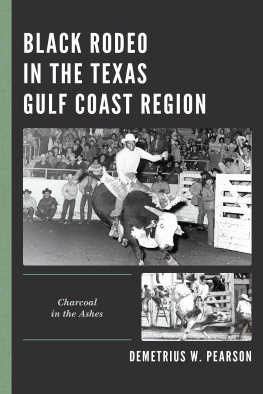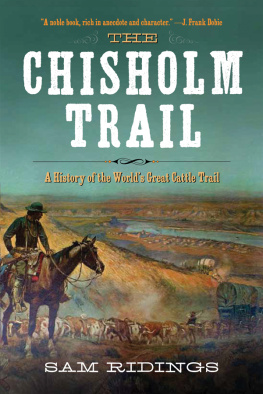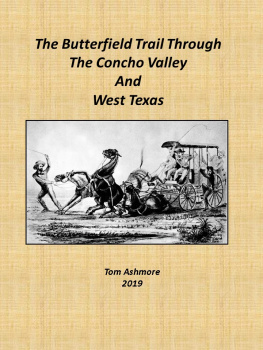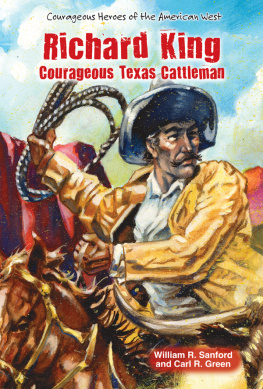THE TRAIL DRIVERS OF TEXAS

GEORGE W. SAUNDERS
President and Organizer Old Time Trail Drivers Association
THE TRAIL DRIVERS OF TEXAS
Interesting Sketches of Early Cowboys and Their Experiences on the Range and on the Trail during the Days That Tried Mens SoulsTrue Narratives Related by Real Cowpunchers and Men Who Fathered the Cattle Industry in Texas
Originally Compiled and Edited by
J. MARVIN HUNTER
and
Published under the Direction of
GEORGE W. SAUNDERS
PRESIDENT OF THE OLD TIME TRAIL DRIVERS ASSOCIATION
Introduction by
B. BYRON PRICE

UNIVERSITY OF TEXAS PRESS, AUSTIN
International Standard Book Number 978-0-292-73076-2 (pbk.)
ISBN 978-0-292-74596-4 (e-book)
ISBN 9780292745964 (individual e-book)
Copyright 1924 by George W. Saunders
Copyright 1925 by Lamar & Barton, Agents
Copyright 1985 by the University of Texas Press
All rights reserved
Printed in the United States of America
Sixth University of Texas Press paperback printing, 2008
Requests for permission to reproduce material from this work should be sent to: Permissions, University of Texas Press,
P.O. Box 7819, Austin, TX 78713-7819.
www.utexas.edu/utpress/about/bpermission.html
This edition is taken from the second edition revised (two volumes in one) published in 1925 by Cokesbury Press.
INTRODUCTION
An estimated 25,000 to 35,000 men trailed six to ten million head of cattle and a million horses northward from Texas to Kansas and other distant markets between the end of the Civil War and the turn of the century. Judging from the literary remains housed in range archives and libraries, memories of the experience lingered far longer in the minds of the men and boys involved than did the tracks of bovine hooves upon the landscape of the Great Plains and beyond. Besides drudgery and hardship, the long drive promised excitement and danger for some; for many, a trip across the prairie behind a herd of Texas Longhorns was the most unforgettable experience of their lives. Years later, memories of raging rivers, unpredictable stampedes, and sudden violence still stirred the blood of these now older and wiser men as they clustered together at old settlers days and county fairs recounting days that would never pass again and yearning for a simpler life in a world grown complex. Cowboys, observed one novelist descended from a long and distinguished line of Texas cowpunchers, are romantics, extreme romantics, and ninety-nine out of a hundred of them are sentimental to the core. They are oriented to the past and face the present only under duress, and then with extreme reluctance. The trail drivers of Texas were no exception. As their numbers steadily declined, the history and folklore created by these drovers threatened to disappear as well.
Alarmed at this prospect and determined to preserve for posterity the historical contributions of the trailriding cowboys, George W. Saunders, himself a veteran of the cattle trail, founded the Old Time Trail Drivers Association in 1915. The new organization and the heavily attended annual reunions that it sponsored provided members with a sense of community and family as well as a place to reminisce. G. O. Burrow, an active member of the association, remarked that in his old age the only real enjoyment I have is our reunions of the Old Trail Drivers. Many others apparently felt the same, for during its first year of operation membership in the Old Time Trail Drivers Association rose to 375 and represented several states. By 1921 the organizational rolls had swelled to more than 1,000.
At the annual convention held in San Antonio in 1917, a crowd estimated at between seven hundred and eight hundred individuals listened eagerly as George Saunders, president-elect of the body, unveiled a plan to publish a book compiled from the members own recollections of droving. Saunders had been soliciting narratives for at least two years and many in the assembly enthusiastically volunteered to add their stories for publication. Responsibility for editing the volume was offered to A. C. Williams of Fort Worth, who was the assistant secretary of the Cattle Raisers Association of Texas and editor of the Cattleman.
Problems that would have tested the patience of Job, as Saunders later put it, plagued the enterprise from the beginning. Few drovers responded quickly, and most had to be cajoled into submitting their stories with follow-up telephone calls, telegrams, and letters. Moreover, neither Williams nor his successor, a columnist for the San Antonio Express, was able to complete the project. World War I intervened and, even more disastrous, the San Antonio firm hired to print the volume went bankrupt and disappeared with virtually all of the previously edited source material.
Undaunted, the determined Saunders embarked afresh on his task, soliciting orders at the 1920 convention for a five-hundred-page volume to be delivered in August. Remembering J. Marvin Hunter, a newspaperman who had shown an earlier interest in the project, Saunders approached him on April 21, 1920, to complete the work. Hunter was dubious about his ability to finish the book in only three months time. Besides, he had never been a cowboy, although his father had once driven the trail. He took the job, nevertheless, but only because he realized that it would be a wonderful contribution to the historical annals of Texas, and that the time was ripe for its publication, as the older fellows are passing off the stage of action at an alarming rate and that within a few years not many would be left to tell the tale.
Not only was the time schedule incredibly tight but also the source material was almost wholly lacking. Beginning with thirty-five historical sketches that had arrived too late to be considered for the earlier planned book, Hunter went to work editing and lining up a competent printer while Saunders sought additional reminiscences. Routinely working late into the evening and never getting more than three or four hours sleep a night, Hunter compiled and edited the steady stream of manuscript material brought him by Saunders. Each day he delivered his previous nights work to the Jackson Printing Company, where he picked up finished proofs to be read and corrected that night. Amazingly, Hunter met his deadline and delivered the completed book to Saunders on July 21. The $500 he received for his efforts paid the mortgage on the Hunter home in San Antonio.
The Trail Drivers of Texas was issued in an edition believed to have numbered a scant one thousand copies. Its favorable reception by association members encouraged Saunders and Hunter to produce an additional volume of perhaps five hundred copies in 1923. By this time Hunter had moved to Bandera, where he had established a small print shop with a linotype machine. I printed this second volume, he would later write of the crudely produced Following the issuance in 1924 of a corrected and revised version of the first volume with a second-edition imprint on the title page, the whole was combined in 1925 into a single volume of 1,060 pages by Cokesbury Press of Nashville, Tennessee, and presented as the second edition revised. This edition, which is reproduced here, contains information not included in the earlier volumes and thus comprises the best and most complete version to date.
Saunders intended that The Trail Drivers of Texas preserve the role played by the drovers in fulfilling the manifest destiny of the nation. These pages sparkle, boasted the foreword to the work, with the lustre of deeds well done by a passing generation, and it is our purpose to keep bright that lustre, that it may not pale with the fleeting years. Saunders vigorously defended the cowboys and drovers with whom he had been associated and frequently commented upon the sterling quality of their characters. Reacting to pulp portrayals of cowboys as wild and lawless brigands, he argued that only a small percentage actually became criminals and that the number was not proportionally greater than one from a comparable sample of college graduates would be. Similar sentiments permeate the volume. Typical was C. S. Broadbents characterization of the cowboy as generous, brave and ever ready to alleviate personal suffering, share his last crust, his blanket and often more important, his canteen. He spent his wages freely and not always wisely, and many became an easy prey to gambling and other low resorts. Some among them became leading men in law, art and scienceeven in theology, proving again that it is not in the vocation but in the man, that causes him to blossom and bring a fruitage of goodness, honor and godly living.
Next page
